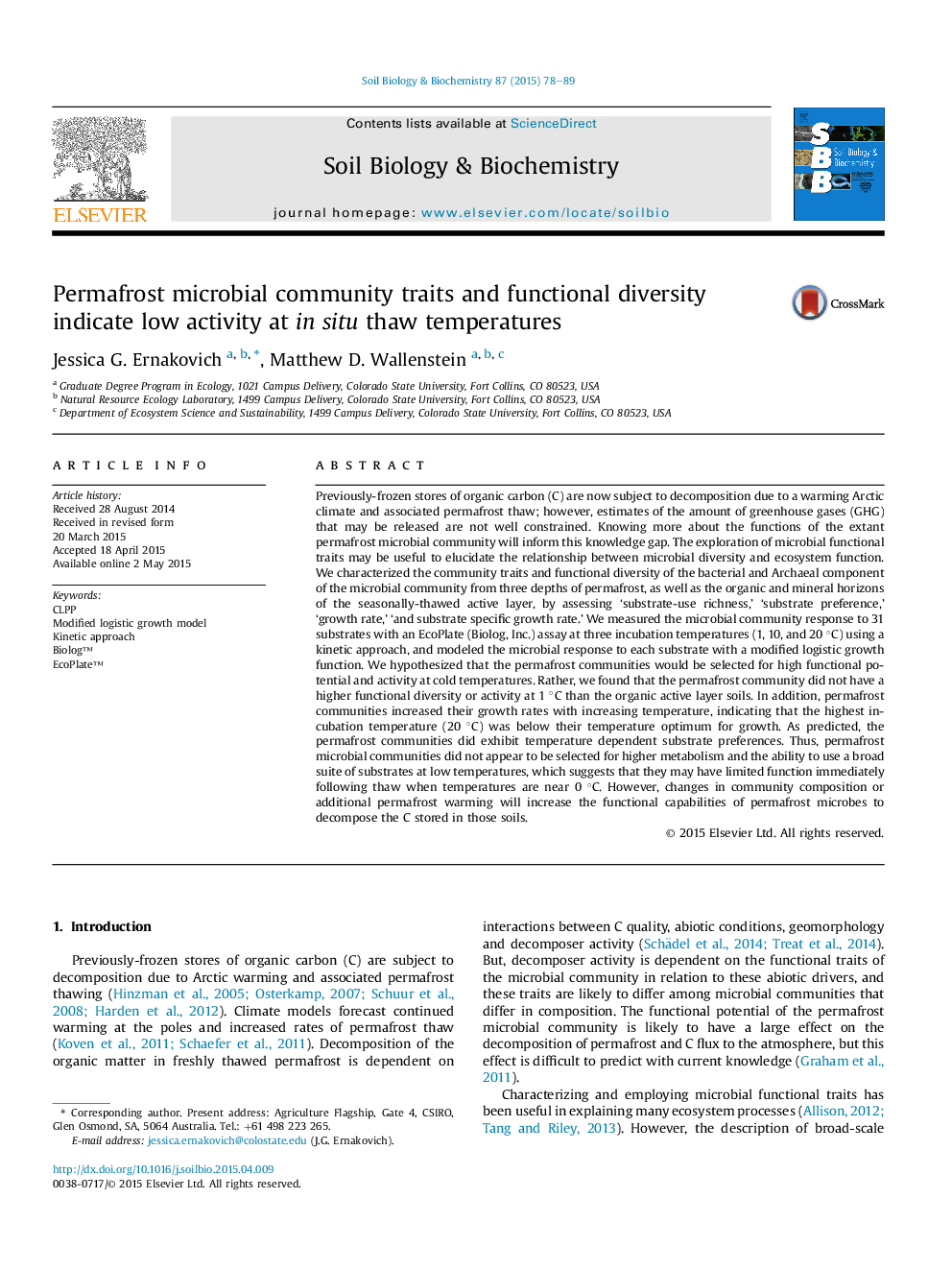| کد مقاله | کد نشریه | سال انتشار | مقاله انگلیسی | نسخه تمام متن |
|---|---|---|---|---|
| 2024503 | 1542597 | 2015 | 12 صفحه PDF | دانلود رایگان |
• We explored arctic microbial community function at 3 temperatures with 31 substrates.
• Permafrost microbes grew slower than active layer microbes, even at 1 °C.
• Permafrost microbes utilized fewer substrates than active layer microbes.
• Permafrost microbial communities may have low function immediately following thaw.
• This may lead to a delay in decomposition and associated production of C gases.
Previously-frozen stores of organic carbon (C) are now subject to decomposition due to a warming Arctic climate and associated permafrost thaw; however, estimates of the amount of greenhouse gases (GHG) that may be released are not well constrained. Knowing more about the functions of the extant permafrost microbial community will inform this knowledge gap. The exploration of microbial functional traits may be useful to elucidate the relationship between microbial diversity and ecosystem function. We characterized the community traits and functional diversity of the bacterial and Archaeal component of the microbial community from three depths of permafrost, as well as the organic and mineral horizons of the seasonally-thawed active layer, by assessing ‘substrate-use richness,’ ‘substrate preference,’ ‘growth rate,’ ‘and substrate specific growth rate.’ We measured the microbial community response to 31 substrates with an EcoPlate (Biolog, Inc.) assay at three incubation temperatures (1, 10, and 20 °C) using a kinetic approach, and modeled the microbial response to each substrate with a modified logistic growth function. We hypothesized that the permafrost communities would be selected for high functional potential and activity at cold temperatures. Rather, we found that the permafrost community did not have a higher functional diversity or activity at 1 °C than the organic active layer soils. In addition, permafrost communities increased their growth rates with increasing temperature, indicating that the highest incubation temperature (20 °C) was below their temperature optimum for growth. As predicted, the permafrost communities did exhibit temperature dependent substrate preferences. Thus, permafrost microbial communities did not appear to be selected for higher metabolism and the ability to use a broad suite of substrates at low temperatures, which suggests that they may have limited function immediately following thaw when temperatures are near 0 °C. However, changes in community composition or additional permafrost warming will increase the functional capabilities of permafrost microbes to decompose the C stored in those soils.
Journal: Soil Biology and Biochemistry - Volume 87, August 2015, Pages 78–89
